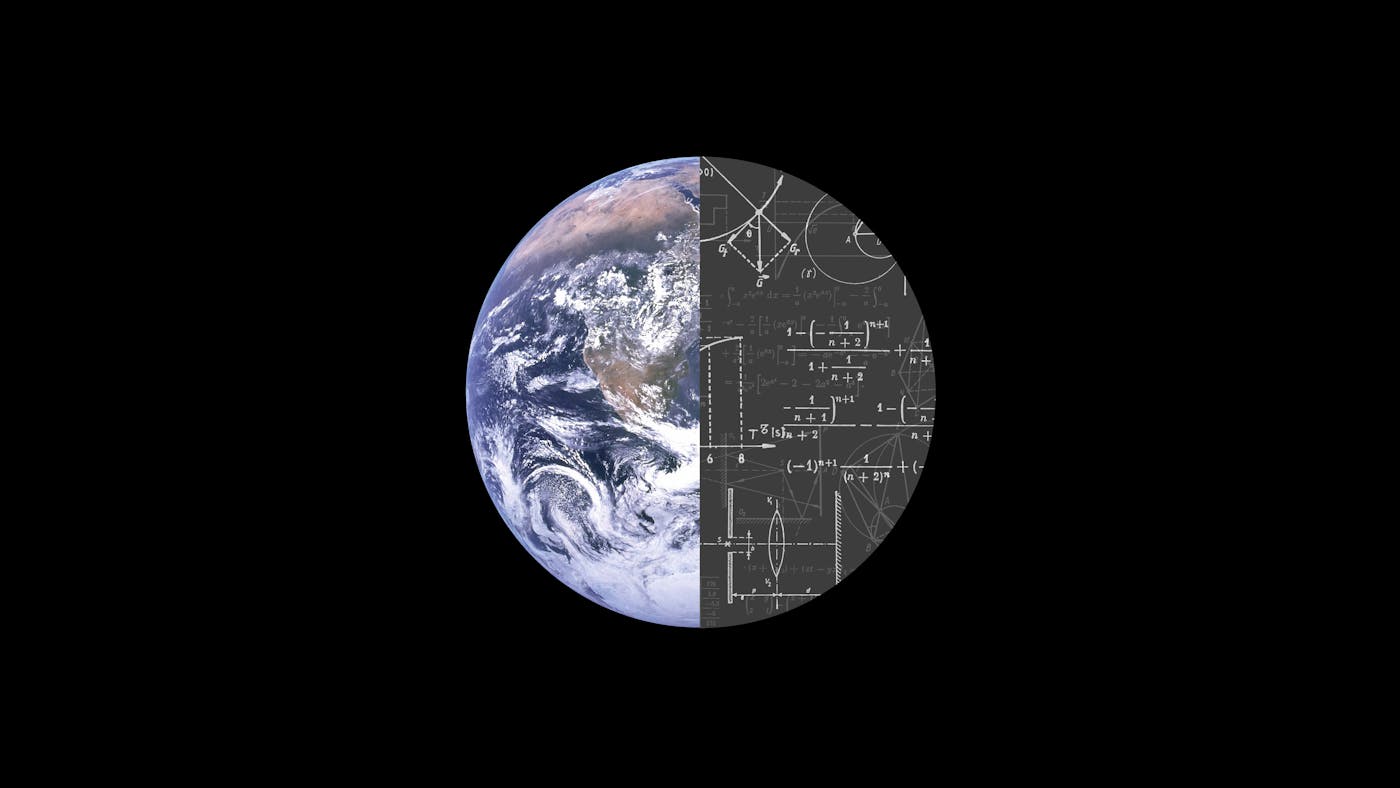
Dr. Grudem usually uses Scripture to ground his Christian doctrine and ethics. However, he supports his belief in an old earth with almost no biblical evidence, dismisses the proposals of scientists guided by God’s word, and follows an interpretation of the observable data put forward by scientists who are calculating the universe’s age based on naturalistic uniformitarian assumptions.
(Due to the constraints of this article, I present the following responses in summary form. For further explanations and resources, see the additional notes on my personal website.)
Day Means Ages?
Context determines the meaning of day (e.g., daylight vs. an unspecified time in Genesis 1:5 and 2:4). The weeklong structure of Genesis 1:1–2:3 and the repeated ending formula “evening and . . . morning” on days 1–6 (Genesis 1:5, 8, 13, 19, 23, 31) indicate that the days are not ages but 24-hour periods. While the week structure could be figurative (as some old-earthers hold), Moses does not portray the “days” as ages. Because God built Israel’s workweek (6+1) off his creation week (Exodus 20:11), the six work days in Genesis 1 are most naturally 24-hour periods.
The earth only needs to rotate in relation to a fixed light source to produce evening and morning. In Genesis 1, light is the only matter that simply “was” (Genesis 1:3); God “makes” or “creates” everything else (Genesis 1:7, 16, 25, 26; 1:21, 27) or guides its production (Genesis 1:11–12). Furthermore, “God is light” (1 John 1:5), and Jesus is “the light of the world” (John 8:12), through whom God made all things and in whom was the life that became the light of men (John 1:3–4). In the consummate new creation, there will be “no need of sun or moon . . . , for the glory of God gives it light, and its lamp is the Lamb” (Revelation 21:23). Similarly, Scripture suggests that, at the beginning, God sustained the earth and provided evening and morning through his own glory’s fixed light, centered in his Son. Indeed, the one who spoke light into darkness is now shining into the new creation (2 Corinthians 4:6). That God gave light apart from luminaries on days 1–3 adds to the implied polemic against pagan worldviews that “the two great lights . . . and the stars” are not “gods” but merely secondary, unnecessary agents by which the true Creator supplies life and order to his universe.
Gaps in the Genealogies?
“When Seth had lived 105 years, he fathered Enosh” (Genesis 5:6). For Grudem, the presence of selective genealogies elsewhere (e.g., Matthew 1:8–9) implies the genealogies in “Genesis 5 and 11 contain gaps.” While not common, the Hebrew verb translated “fathered” (Hiphil yld) allows for genealogical gaps (unnamed descendants), meaning the subject may be the marked direct object’s ancestor and not his immediate father (see Deuteronomy 4:25; 2 Kings 20:18). Thus, Enosh could be Seth’s son, grandson, or more distant relative.
Nevertheless, Grudem infers that Genesis 5:6 allows for chronological gaps (i.e., missing years). Yet the text requires that Seth was 105 years old when Enosh was born, regardless of whether Enosh was Seth’s immediate son or more distant relative. Seth’s age marks the time when the action and result happened, with no chronological gaps. Even if one allows for genealogical gaps, Genesis 5 and 11 supply a chronological timeline that implies a young humanity.
Death and Suffering Before the Fall?
While unstated, Grudem’s position requires millions of years of animal death and suffering before the fall. Yet Scripture associates creature mortality and misery only with curse (see my original arguments for a young earth).
Scientific ‘Evidence’ for an Old Earth?
Grudem has no compelling biblical reasons for believing in an old earth. Furthermore, if any of my biblical arguments for a young earth is sound, then Scripture indicates that Grudem’s scientific interpretations are seriously flawed and need to be aligned with Scripture’s inerrant testimony.
Grudem’s “facts” are actually only interpretations of the observable data growing from his belief that present measurable processes are the key to understanding the remote past. He slights young-earthers for highlighting this, but the point stands: uniformitarian assumptions drive all six of his scientific claims, even though Scripture and science suggest that scientific means alone will not establish the earth’s age.
First, the Bible portrays creation as the omnipotent God’s supernatural work. Grudem upholds this yet hesitates to affirm Scripture’s testimony that light and terrestrial vegetation (Genesis 1:3, 11) preceded the luminaries, whose sole revealed purpose is to guide life on earth (Genesis 1:14) and to highlight Yahweh’s promises (Genesis 15:5; Jeremiah 33:22) and power (Isaiah 40:25–26; Amos 5:8). Moses had no problem portraying God causing life-giving light to shine without the sun. Why should we?
Second, against scoffers who claim, “All things are continuing as they were from the beginning of creation” (2 Peter 3:4), Peter stressed how this conviction overlooks that “the world that then existed was deluged with water and perished” (2 Peter 3:5–6). In the same way that miracles can alter normal time rates in ways unperceived by non-onlookers (e.g., John 2:9–10), so too the global flood’s heat and pressures would have radically altered geography, geology, climate, and more. Scientists recognize that energy and force can drastically compress matter’s formation time, and because God shaped the earth through cataclysm (see Genesis 7:10–24), the process rates the flood affected must have been very different from those measured today.
The third reason science alone cannot establish the earth’s age is because so many assumptions shape scientific interpretation. I will mention six.
- With his belief that the universe is expanding, Grudem assumes light’s one-way speed is equal to its roundtrip speed (which is unnecessary), that the universe began with no size (in contrast to a mature universe), and that cooling and expansion rates have remained constant over billions of years (which we cannot know and which many physicists question).
- Because travel effects time, physicists can measure only light’s roundtrip speed (e.g., off mirrors = 186,000 mi/sec or 300,000 km/sec). Grudem assumes that light’s speed is constant in all directions (isotropic), but light’s one-way speed could be virtually instantaneous (anisotropic), which is what Genesis 1:14–15 suggests.
- The polar ice sheets’ age and formation determine the expected annual layer compression-thickness in the cores, and this guides where one measures cycles of oxygen isotopes to calculate age. If weekly storms formed the ice masses rapidly in a single ice age following the flood, then the annual thickness would be greater (not having thinned as much under eons of pressure), and old-earthers would be falsely treating multiple storm cycles in single years as if each one represented a year.
- Dating old lake deposits assumes their pattern and rate remained unchanged throughout time, but catastrophes like floods, hurricanes, and volcanic eruptions create moving slurries, resulting in storm or flood deposits (called rhythmites) that are indistinguishable from the annual seasonal deposits (called varves). And because varve counts, tree-ring counts, and radiocarbon-14 dates are inter-calibrated, they should not be used to reinforce one another.
- While radiometric dating of rocks helps establish relative formation sequence in earth history, Grudem assumes that we know the starting conditions (e.g., only uranium [= parent isotope] and no lead [= daughter isotope]), that no contamination or leaching has altered rock makeup (which can’t be measured without an independent benchmark), and that the decay rate has remained constant, uninfluenced by altered forces of heat or pressure (i.e., catastrophe) that could speed the decay.
- Plate tectonics best explains why the continents are no longer united (Genesis 1:9–10), but Grudem assumes that the rate of continental separation was always gradual, as it is today, whereas the catastrophe model of rapid separation also aligns with the data, answers why plate movement would have slowed drastically after the flood, and explains both the lack of compression in ocean sediments and the erratic magnetic polarity in the ocean crust (suggesting rapid cooling in non-uniform ways due to contact with chaotic ocean waters).
Conclusion
God has written two “books” — the word and the world, and the former’s infallible and inerrant nature requires that it must always guide our reading of the latter. Grudem attempts to establish the earth’s age from science alone. However, he makes far too many assumptions, most of them guided by uniformitarian thinking that runs counter to Scripture’s testimony to God’s powerful control and to the flood catastrophe. God alone was present at the beginning, and his word strongly points to a young earth and should guide our scientific interpretations of the observable data.
This article originally appeared on Desiring God.






